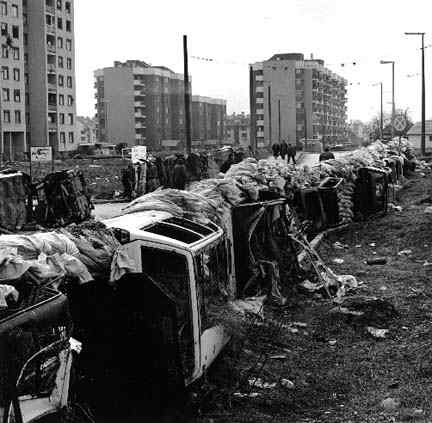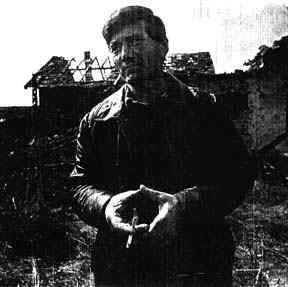




 |
 |
 |
 |
 |
|
| Contents Forward Backwards |
|
Built to house athletes for the 1984 Winter Olympics, Dobrinja symbolized the modern, international, and cosmopolitan Sarajevo. Prior to the war it was a neighborhood of colorful high-rise apartments housing young urban professionals. During the war it became the Warsaw Ghetto of Sarajevo. The only road out of Dobrinja going north to government-controlled New Sarajevo was surrounded to the south, east, and west by the Serb-controlled airport, the JNA Lukavica Barracks, and the Serb-held suburb of Ilidza. It also passed Majmilo Hill, a vantage point for Serb snipers. As a result, Dobrinja was completely isolated during the first two years of the war. It was a siege within a siege. More than any other Sarajevo neighborhood, Dobrinja also symbolized solidarity and defiance. Facing overwhelming odds, residents of this neighborhood formed numerous brigades to help each other with repairs, medical care, food rationing, and emotional support. It soon became the Sarajevo "commune." The man below had a different experience of Dobrinja. His traditional stucco and wood house was on the edge of a neighborhood, facing the rear of numerous tall, modern apartment buildings. On first inspection, it looked like thousands of other destroyed homes one sees throughout Bosnia. But he offered us a closer look. His home had been transformed clandestinely into a Chetnik bunker with fortified walls, ports for snipers, and a system of trenches. He carefully pointed out numerous mines and booby traps as we made our way into the bowels of this bunker that had Chetnik symbols painted on the walls, spent shell casings carpeting the floor, and USAID ration-bags-turned-sandbags lining the trenches. |
  |